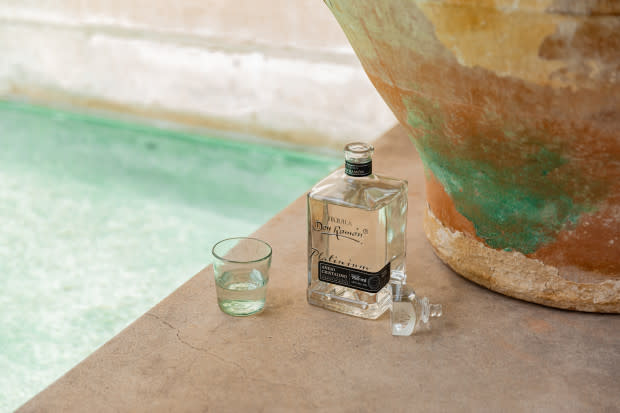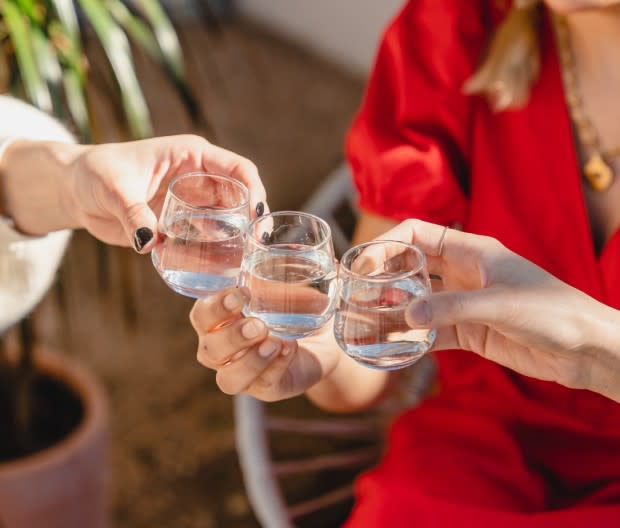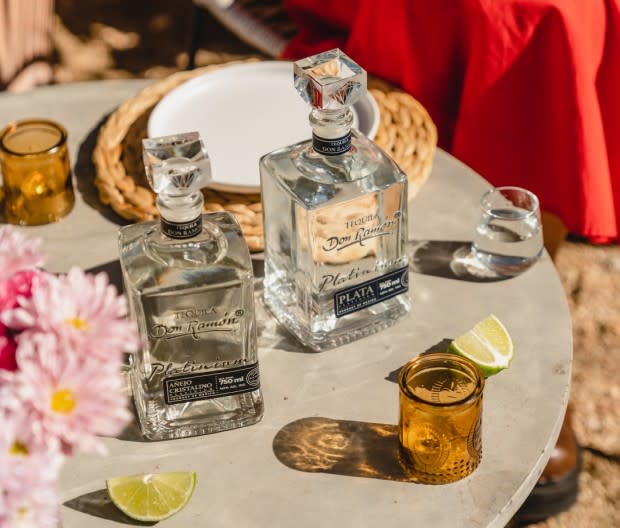Tequila Don Ramón Platinium Cristalino Collection Is a Clear Winner
This article was published in partnership with Casa Don Ramón
In the spirits world, there are plenty of rules to be followed. In the case of tequila, it must comprise 100 percent blue agave plant distillate. And as far as its three main categories—blanco or silver, reposado, and añejo—it all boils down to time.
Blanco is the starting point—typified by being clear, crisp, and unaged. Reposado is tequila aged in oak barrels for a minimum of two months and up to a year. And añejo spends one to three years resting in oak barrels. The aging process, or lack thereof, lends a distinct appearance to each expression. Añejo tends to appear golden brown, reposado a light caramel, and blanco was once easily identified by its clarity.
Now, one of the most recent innovations in the category has arrived to shake all of that up, thanks to a methodology that transforms a once-deeply colored añejo or reposado into a crystal-clear elixir—mimicking the look of a blanco but with the added depth and flavor that aged tequilas are prized for. This newer style of tequila is aptly named cristalino, and its popularity is growing rapidly for good reason.

Courtesy Image
A clear winner
“Tequila cristalino has the essence of a reposado or añejo, or a mix of both, but without the amber color that characterizes them,” says Ernesto Acuña, marketing director at Casa Don Ramón. “After its maturation, a complex filtration process removes most of the liquid's amber color and piquancy.”

Don Ramon
Cristalinos offer more than just crystalline looks, though. They’re uniquely characterized by an exquisitely smooth taste and mouthfeel, and brighter, more crisp flavors than your typical aged tequila. One of the top cristalinos currently on the market is Tequila Don Ramón's Platinium Cristalino Collection from Casa Don Ramón, created from premium agaves that've been aged for at least eight years to reach peak maturity.
“The grinding and extraction process is done cold,” Acuña says, “which helps us to use the raw material to the maximum, using five kilograms of agave to produce a liter of tequila, while the average [producer] uses eight kilograms. We also have technological advantages that allow us to provide different sensory profiles—the harmonic fermentation process, which involves setting the atmosphere with classical music, helps us to control the movement of the yeast to stimulate the aroma and bouquet of our distillates.”
If that wasn’t enough, the master distillers at Casa Don Ramón also profile their distillates with ozone rather than air, eliminating certain elements of spiciness and astringency, leaving the final product with a unique smoothness. All of this combines with the original complexity and character of an añejo tequila—rested in barrels before being put through that multi-step process to become a cristalino.
Complexity goes crystal
The fastest-growing agave spirit in both the United States and Mexico, quality cristalinos such as Casa Don Ramón’s are quickly becoming coveted by both tequila connoisseurs and curious imbibers alike. It helps that cristalinos also present a whole new breadth of flavor for tequila to adopt, depending upon both the original aged product, and the uniquely complex processes that turn it crystalline.

Don Ramon
Following Casa Don Ramón’s multi-step filtration process described above, amber liquid takes on a new life as a clear tequila, also thanks to activated carbon that draws out the color acquired in the barrel. What remains is a buttery, aromatic, well-defined spirit—a sip of which reveals a medley of spices and wood, while the long rest inside American oak barrels awakens the deeper notes of nuts and vanilla.
It’s these unique qualities that make a bottle of Tequila Don Ramón Platinium Añejo Cristalino the perfect gift to surprise and delight with, or to break out at your next intimate gathering.
Great for entertaining, the brand's Tequila Platinium Reposado Cristalino can be used to add agave-rich complexity and a rounded mouthfeel to the profile of tequila cocktails that you’re shaking or stirring up at home, while its Tequila Platinium Añejo Cristalino is best served neat or poured over a single rock to savor its nuanced flavors.
